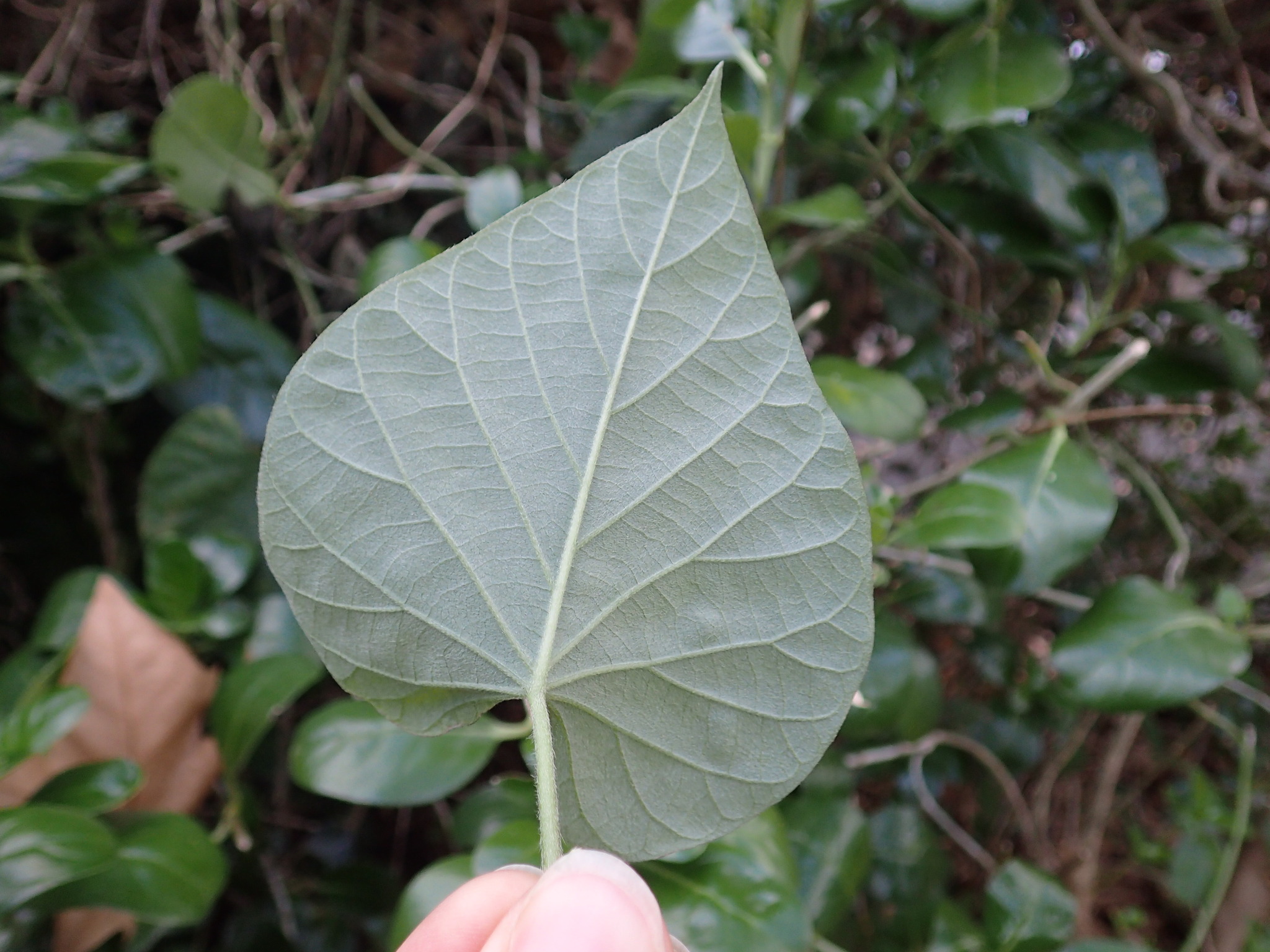
Classical name, possibly from Greek ips — worm, homoios — like, referring to the twining stems.
Annual or perennial, mostly climbing and trailing herbs, shrubs or trees, sometimes tuberous and the woody species often with latex. Leaves simple or rarely compound, entire to deeply lobed. Flower clusters axillary of 1-many flowers. Flowers with 5 free overlapping and unequal sepals. Corolla funnelto bell-shaped, the petals with a distinctive mid-line and often brightly coloured. Stamens hairy above their attachment point. Ovary of 2-4 chambers, with 2 ovules per chamber. Fruit capsule splitting longitudinally into 4-6 valves.
Grown mainly in tropical and subtropical areas for the attractive flowers on twining stems. Some species have become naturalised and several are serious pests in sugar cane plantations.
Woody species by cuttings, others by seed.
Some species have edible tubers (I. batatas, Sweet Potato, is an important source of carbohydrate in the tropics). Several other species have been used by Aborigines as a food source, sometimes as young shoots (e.g. I. aquatica); others are the source of hallucinogenic drugs and medicinal compounds (e.g. I. spathulata) or are used to bind soils and sand (I. pes-caprae).
Climbing plants; 1 style with 1-2 spherical or bilobed stigmas.
About 600 species from mostly tropical and subtropical regions.
Gunn (1972), McPherson (1981), McDonald (1995), Austin & Huaman (1996).
Source: (2002). Convolvulaceae. In: . Horticultural Flora of South-eastern Australia. Volume 4. Flowering plants. Dicotyledons. Part 3. The identification of garden and cultivated plants. University of New South Wales Press.
